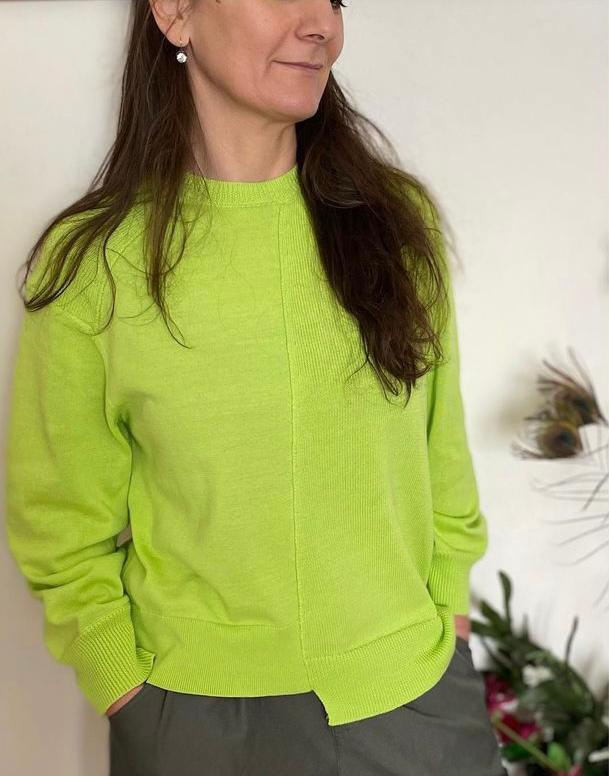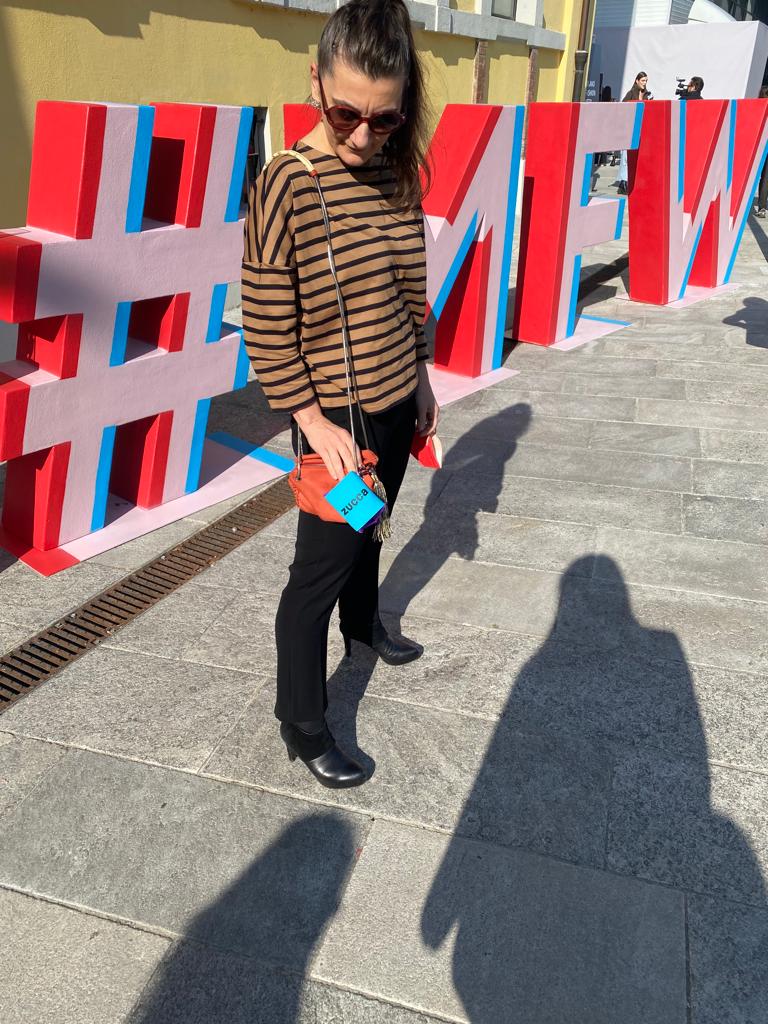The Asymmetric Fluo Cotton Sweater
The light green version
The item we introduce today is The Asymmetric Fluo Cotton Sweater by ZUCCa.
The line is stylish, comfortable and easy to wear. Also, the concept of asymmetric design is something we really like because it’s modern and unusual, and it looks great when you wear it.
We already showed you the purple version a couple of weeks ago, and we are happy you enjoyed it! Since this pull is a new classic, we decided to select another colour too, which is a stronger version.
By the way, the quantities we order are limited, and this is intentional. In fact, the idea is to create unique outfits and not replicate clones you see everywhere.
Discover The Asymmetric Fluo Sweater
About the design
The sweater features a round neck and asymmetric hemline. Also, a robust seam along the front and side highlights the mix of the two different thicknesses of the same material. The seam details the shoulders too.
Ribbed neckline, cuffs and hem. The silhouette is slightly oversized and unisex.

by ZUCCa
About the material
100% cotton, non-glossy. It is made by knitting 100% soft cotton yarn into the high and middle gauge and docking it. The material has a thin thickness with a certain elasticity.
About the colour
Light green: a vibrant colour that makes it a bold piece, not for everyone. But this bright hue will give you an instant mood boost.
Laundry
Hand washable, easy-care.
You can wash this item by hand at home.
This new season item is a versatile modern garment that offers multiple styling options. Even though it’s a bold colour, it’s easy to mix and match. It’s perfect with white pants, but you can also pair it with navy, denim or black bottoms.
The Asymmetric Fluo Cotton Sweater is timeless, genderless and stylish.
Drop us an email or DM for any further info. We’d love to help!
The Asymmetric Fluo Cotton Sweater Read More »


